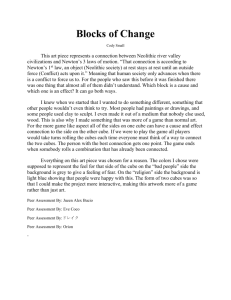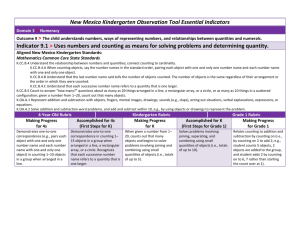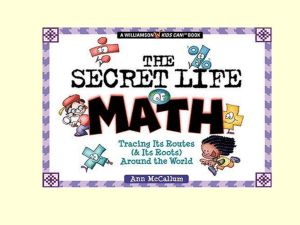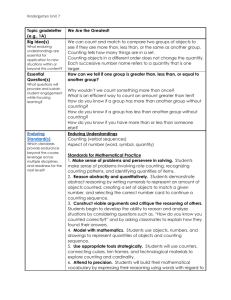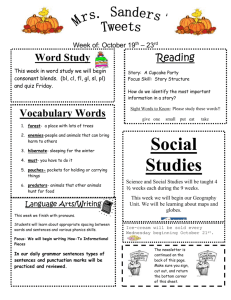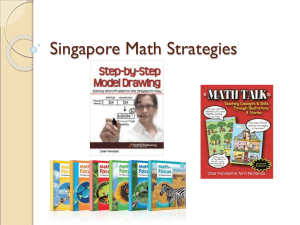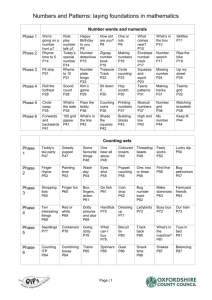K.CC.B.4c unpacked
advertisement
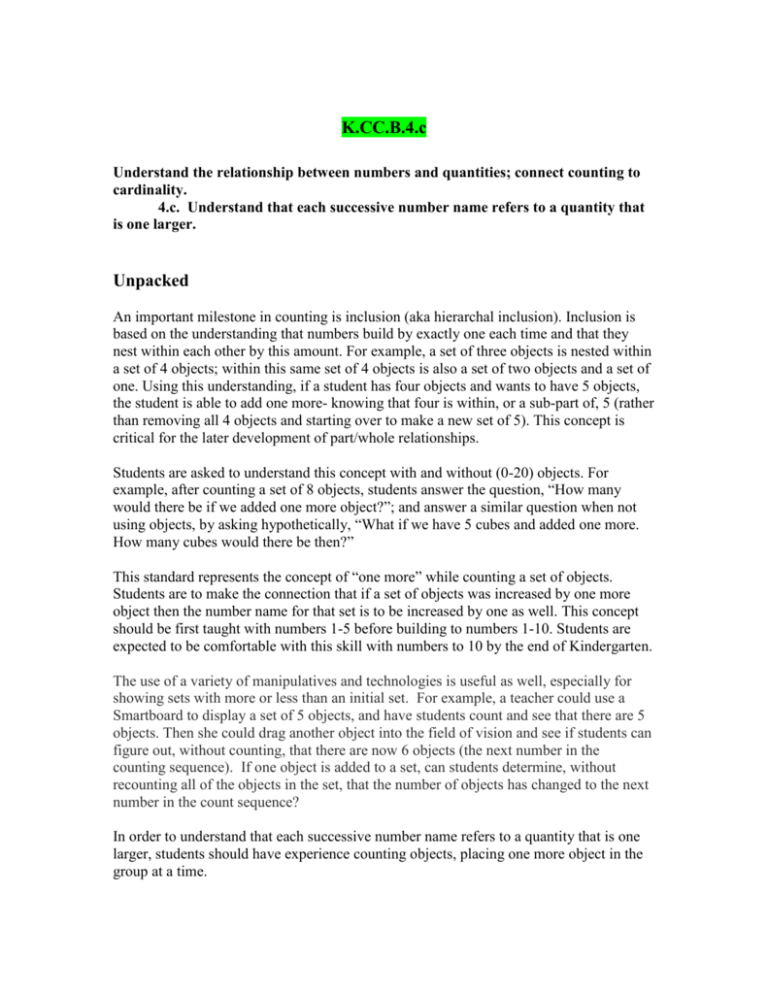
K.CC.B.4.c Understand the relationship between numbers and quantities; connect counting to cardinality. 4.c. Understand that each successive number name refers to a quantity that is one larger. Unpacked An important milestone in counting is inclusion (aka hierarchal inclusion). Inclusion is based on the understanding that numbers build by exactly one each time and that they nest within each other by this amount. For example, a set of three objects is nested within a set of 4 objects; within this same set of 4 objects is also a set of two objects and a set of one. Using this understanding, if a student has four objects and wants to have 5 objects, the student is able to add one more- knowing that four is within, or a sub-part of, 5 (rather than removing all 4 objects and starting over to make a new set of 5). This concept is critical for the later development of part/whole relationships. Students are asked to understand this concept with and without (0-20) objects. For example, after counting a set of 8 objects, students answer the question, “How many would there be if we added one more object?”; and answer a similar question when not using objects, by asking hypothetically, “What if we have 5 cubes and added one more. How many cubes would there be then?” This standard represents the concept of “one more” while counting a set of objects. Students are to make the connection that if a set of objects was increased by one more object then the number name for that set is to be increased by one as well. This concept should be first taught with numbers 1-5 before building to numbers 1-10. Students are expected to be comfortable with this skill with numbers to 10 by the end of Kindergarten. The use of a variety of manipulatives and technologies is useful as well, especially for showing sets with more or less than an initial set. For example, a teacher could use a Smartboard to display a set of 5 objects, and have students count and see that there are 5 objects. Then she could drag another object into the field of vision and see if students can figure out, without counting, that there are now 6 objects (the next number in the counting sequence). If one object is added to a set, can students determine, without recounting all of the objects in the set, that the number of objects has changed to the next number in the count sequence? In order to understand that each successive number name refers to a quantity that is one larger, students should have experience counting objects, placing one more object in the group at a time. For example, using cubes, the student should count the existing group, and then place another cube in the set. Some students may need to re-count from one, but the goal is that they would count on from the existing number of cubes. S/he should continue placing one more cube at a time and identify the total number in order to see that the counting sequence results in a quantity that is one larger each time one more cube is placed in the group. When learning to count, it is important for kindergarten students to connect the collection of items (4 cubes), the number word (“four”), and the numeral (4), ultimately creating a mental picture of a number. If students simply rote-count a collection of objects without connecting these three components together, they “engage in a meaningless exercise of calling numbers that are one more than the last.” (Midget, 2012) Subitizing, the ability to “instantly see how many” (Clements, 1999), helps students form a mental picture of a number. When students recognize a small collection of objects (e.g., 2 sets of two dots) as one group (e.g., four) – they are beginning to unitize. This ability to see a set of objects as a group is an important step toward being able to see smaller groups of objects within a total collection- which is necessary to decompose number. Materials such as dot cards, dice, and dominoes provide students opportunities to see a variety of patterned arrangements to develop instant recognition of small amounts.




